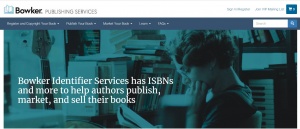Getting into medical school isn’t just about good grades and test scores anymore. It’s about strategy, personal narrative, timelines, and nuance. And for many students, especially those aiming for top-tier programs, working with a medical school admissions consultant is the best way to build a competitive application and avoid a costly rejection.
But how do you know if you need one? What exactly do consultants do? And how do you make sure you don’t get scammed by the wrong firm?
Let’s break it down.
Do I Need a Med School Admissions Consultant?
No, you don’t need a medical school admissions consultant to get into medical school, but it’s highly recommended as it’s the only way to guarantee your acceptance and drastically reduce your stress. To find out if you truly need a med school admissions consultant, evaluate your prerequisites, MCAT score, GPA, school selection, personal statement writing, and interview prep on your own.
But if you’re unsure which schools to target, struggle with writing about yourself, feel overwhelmed by secondary essays, or simply want an expert in your corner to keep you on track, a consultant can make a measurable difference.
What Applying to Med School With Admissions Consulting vs. Applying Without Support Looks Like
Here’s what applying to medical school with an admissions consultant versus without one looks like.
| Without a Consultant | With a Consultant | |
| School Selection | School selection can be a random mix of reach, target, and safety, often based on rankings or geography | Your consultant will work with you to build a strategic school list structured around your stats, story, and goals |
| MCAT Prep | Solo MCAT prep often leads to studying blindly, inefficient use of time | Your consultant will help you prepare for the MCAT with an integrated prep plan, personalized study strategies, and a score guarantee |
| GPA Benchmarks | Applying by yourself means there’s no guidance on how your GPA compares to previously accepted applicants or where to apply strategically | Your consultant will help you apply to programs where your GPA doesn’t disqualify you |
| Acceptance Chances | Without a counselor’s support, acceptance rates can often fall below 2%, with thousands of students competing for spots | Your consultant will drastically increase your acceptance chances, with the most credible firms offering an acceptance guarantee |
| Personal Statement | Your personal statement can be generic, unrefined, and unoptimized if written by yourself | Your consultant will review your personal statement and help you rewrite it so that your strengths and strongest qualities are fully emphasized |
| Secondary Essays | Your secondary essays can be rushed, repetitive, or misaligned with school values without a counselor’s support | Your consultant will tailor your secondary essays to each school’s mission, with the most credible firms offering unlimited revisions |
| Application Strategy | Your application strategy likely consists of guesswork, last-minute decisions, and inconsistent messaging when applying by yourself | Your consultant will help you apply to multiple schools strategically with a carefully sequenced narrative across all documents and touchpoints |
| Interview Prep | Your interview prep is often subjected to minimal or solo practice, leading to nerves or weak answers | Your consultant will help you prepare for interviews with mock interviews, real-time feedback, and behavioral strategy |
| Scholarship Awards | Applying alone can lead to limited financial aid opportunities | Your consultant will help you earn thousands of dollars per year in scholarship awards |
| Emotional Toll | Applying alone often leads to high stress, isolation, and second-guessing every step | Your consultant will improve your confidence, structure, and provide reliable mentorship from start to finish |
As the table shows, applying to medical school without expert support often results in limited preparation, lower chances of admission, and wasted money. It’s easy to underestimate what admissions committees are really looking for, and even easier to get lost in deadlines, requirements, and changing expectations.
With a consultant, your application becomes a guided process. Every component is optimized to highlight your strengths and mitigate your weaknesses.
For students who want to avoid rejection and maximize their chances, that kind of support can be the difference between getting put on a waitlist and getting accepted.
How Do Consultants Actually Improve Your Med School Acceptance Chances?
Medical school admissions consultants improve your acceptance chances by spotting the gaps in your application, highlighting your strengths, and mitigating your weaknesses.
The best consultants have read thousands of real applications. They know what medical schools are looking for because they’ve sat on the other side of the admissions table.
Consultants guide you through framing your MCAT score to express how your shadowing experience demonstrates your leadership skills and preparedness for the rigors of medical school.
Consultants also help you develop the entire narrative of your application, from school list to interview room, so that every part reinforces your strengths and tells a consistent, compelling story.
How to choose a med school consultant
Here’s a brief checklist to help you find the right consultant for your goals:
✅ Experience That Matters: Look for consultants with direct experience on medical school admissions committees, as these are the people who’ve made actual admissions decisions.
✅ Full-Spectrum Support: Consultants should guide you through your personal statement, secondary essays, school list strategy, mock interviews, and more, not just one or two elements.
✅ Proof of Success: Consulting firms should have verified third-party reviews, success stories, and testimonials are a must. You need to see that they’ve delivered results for students like you.
✅ Acceptance Guarantee: Some of the most reputable firms back their work with a guarantee.
✅ Personalized MCAT Support: The best firms offer MCAT tutoring and study planning for applicants who need to improve their scores, either bundled with admissions consulting or standalone.
✅ One-on-One Counseling (Not Group-Based): Avoid firms that rely on group coaching or templated feedback. You want individualized, dedicated support.
✅ Unlimited Document Review: The right consulting firm will offer no limits on edits or revisions for secondary essays and personal statements.
Let’s take Inspira Advantage, one of the industry’s leading medical school admissions consulting firms, as an example.
- ✅ Inspira Advantage offers personalized support for every part of the medical school application process, with unlimited hours of expert counseling.
- ✅ Inspira’s team is composed of the nation’s largest team of former admissions officers, physicians, and med school insiders.
- ✅ They’ve helped over 10,000 students get into med school with a 98% acceptance rate.
- ✅ Offers a medical school acceptance guarantee as part of their premium packages.
- ✅ Inspira has a proven track record of helping non-traditional applicants, as well as those with lower GPAs or MCAT scores, gain admission to medical school, based on 1,000+ verified reviews across platforms.
Inspira Advantage’s services are designed to support students at every GPA and MCAT level. They also offer bundles that include both MCAT tutoring and admissions coaching, ideal for students who need to strengthen multiple parts of their profile.
When Is the Best Time to Hire a Med School Consultant?
The best time to hire a med school consultant is as early as possible. Working with a consultant from the start of your premed journey means they can help you build a strong foundation before any weak points show up on your transcript or resume.
But even if you’re applying this cycle, it’s not too late to get accepted. The right consultant can still elevate your application with strategic positioning and personalized support.
How to Spot Scam or Low-Quality Consultants
Not all consulting firms are designed to help you get accepted to med school. Watch out for these red flags when searching for the right company:
❌ No Verified Admissions Experience: They don’t list specific schools, roles, or admissions committee experience for their consultants.
❌ Template-Based or Group Coaching Models: They rely on recycled materials or large group sessions instead of personalized, one-on-one guidance tailored to your profile.
❌ No Comprehensive Support: They offer help with just one part of the process (e.g., personal statement) but leave you stranded for secondaries, interview prep, or school list strategy.
❌ No Clear Reviews or Testimonials: They have limited or no verified third-party reviews, or their testimonials sound overly scripted and impossible to fact-check.
❌ No Acceptance Guarantee on Any Packages: If there’s no refund or guarantee policy offered, even for high-tier packages, that’s a red flag.
❌ No MCAT Support or Strategy Services: They treat MCAT prep as separate or ignore it altogether, even though it’s a core part of your competitiveness as an applicant.
❌ No Access to a Personalized Dashboard or Progress Tracker: They expect you to manage everything through email or spreadsheets instead of offering centralized tools to help you stay organized.
❌ Limited Document Review or Revision Caps: They limit how many times you can revise your essays, charge extra for additional edits, or rush you through key milestones.
❌ Generic Advice Without Data or Strategy: They can’t explain why a school is a good fit for you, don’t show data to back decisions, and offer the same advice to everyone.
Final Thoughts
Working with a med school admissions consultant is an investment based on outcomes. The average student spends thousands of dollars applying to medical school, and with a high national rejection rate, that money often goes nowhere.
Working with the right consultant reduces your risk of rejection, increases your confidence, and gives your application the polish and positioning it needs to succeed.






